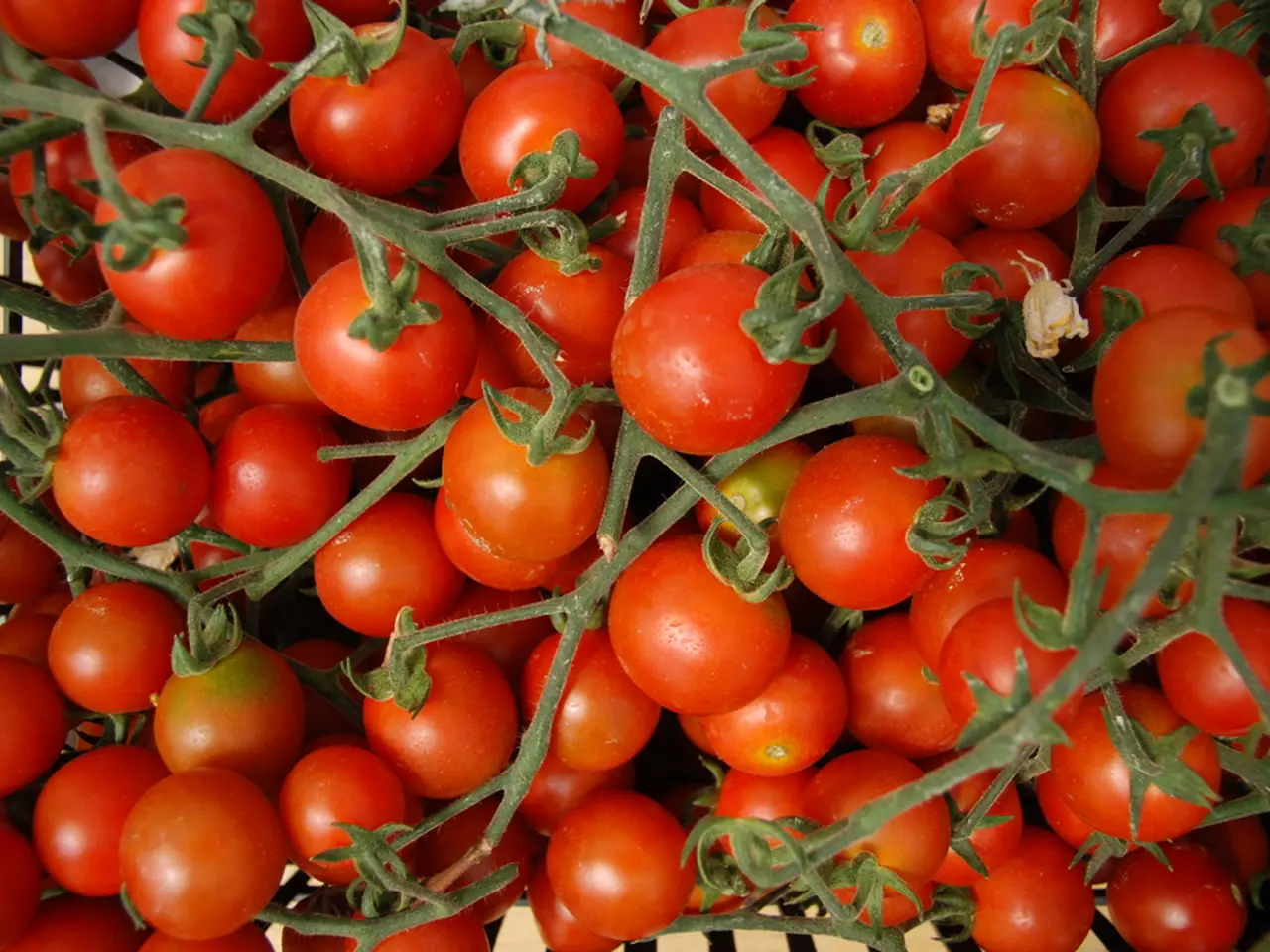Identifying and Controlling Early Blight in Tomatoes: Recognizing and Preventing the Proliferation of Alternaria Disease
In the world of tomato cultivation, one of the persistent challenges faced by gardeners is Early Blight. This fungal disease, caused by Alternaria solani and Alternaria tomatophila, can cause significant damage to tomato plants if not managed properly.
Early Blight thrives in warm, damp conditions and can appear at any time during the season, especially after rainy days or heavy morning dew. The disease starts with yellow patches on the lower leaves, followed by dark brown spots with faint rings, resembling a target. If left untreated, Early Blight can cause the entire leaf to turn yellow, wilt, and drop, affecting the stems and even the fruit.
However, with quick action, regular monitoring, and a clean, well-ventilated garden, Early Blight can be effectively managed. Here are some key prevention details:
- Choose resistant tomato varieties: Opting for tomatoes that are resistant to Early Blight can significantly reduce susceptibility to the disease.
- Crop rotation: Plant tomatoes away from other solanaceous crops in subsequent seasons to prevent pathogen buildup in soil. This practice helps in breaking the disease cycle.
- Sanitation: Remove and destroy infected leaves and plant debris after each growing season to eliminate overwintering blight pathogens.
- Trellis and properly space plants: Tomatoes should be spaced at least 2–3 feet apart to improve air circulation and reduce leaf moisture, which limits fungal growth.
- Avoid overhead watering: Overhead watering leaves the foliage wet, which can exacerbate Early Blight. Instead, use drip irrigation or water at the soil level to keep foliage dry.
- Clean tools and equipment: Regularly clean tools and equipment to prevent disease spread via pruning or handling.
Implementing these cultural practices before symptoms appear is crucial, as Early Blight can be difficult to control once established. Copper or sulfur fungicide sprays can be used as supplementary control when needed but are most effective when combined with these preventive methods.
It's important to note that Early Blight fungus remains in soil, compost, and old plant matter, and can spread through tools or hands. Therefore, if disease was present in leftover soil from last season, it should be sterilized or discarded.
When in doubt, consult the local extension office for identification and treatment advice. Tomatoes affected by Early Blight can often still be eaten if the fruit looks healthy, but any soft, moldy, or leaking fruit should be discarded.
Mulching tomatoes provides a barrier that stops spores from being splashed on the plant when watering. Additionally, removing affected leaves immediately and providing good airflow, watering at the soil line, and early-day watering can help control Early Blight.
Rotating the active ingredients if using chemical treatments for Early Blight, as fungi can become resistant, is also advisable. Remember, Early Blight doesn't affect humans, but it can impact flavor and shelf life.
A full guide on how to grow tomatoes can help avoid trial and error in tomato cultivation. By following these guidelines, gardeners can enjoy a healthy and bountiful tomato harvest, free from the worries of Early Blight.
[1] University of Massachusetts Extension. (2021). Early Blight. Retrieved from https://extension.umass.edu/vegetable-fruit-resources/fact-sheets/early-blight
[2] Purdue University Extension. (2021). Early Blight. Retrieved from https://extension.purdue.edu/extmedia/BP/BP-68-W.pdf
[4] Michigan State University Extension. (2021). Early Blight. Retrieved from https://www.canr.msu.edu/news/early_blight_on_tomatoes
- Maintaining a balanced lifestyle incorporating health-and-wellness, fitness-and-exercise, and nutrition can help strengthen the immune system, enabling the body to better resist diseases and stay healthy.
- For those interested in gardening as a hobby and wishing to cultivate tomatoes, it's essential to be aware of potential threats like Early Blight, and follow proper preventative measures for a successful home-and-garden project.
- Incorporating gardening into your lifestyle can provide a source of fresh, nutritious produce, while also offering aesthetic appeal and supporting a sustainable lifestyle.




